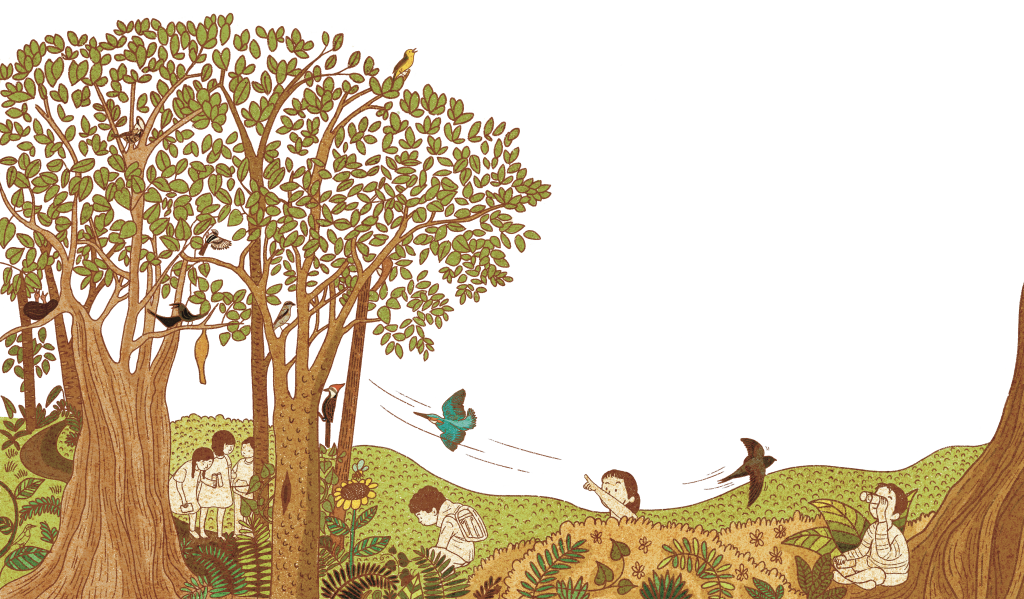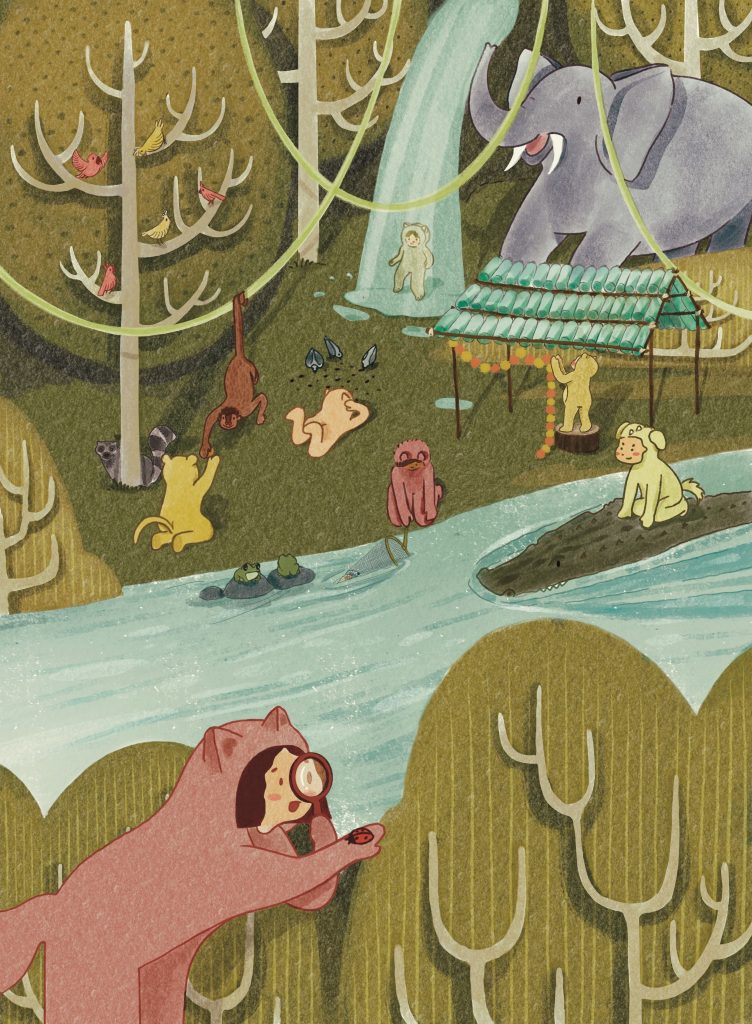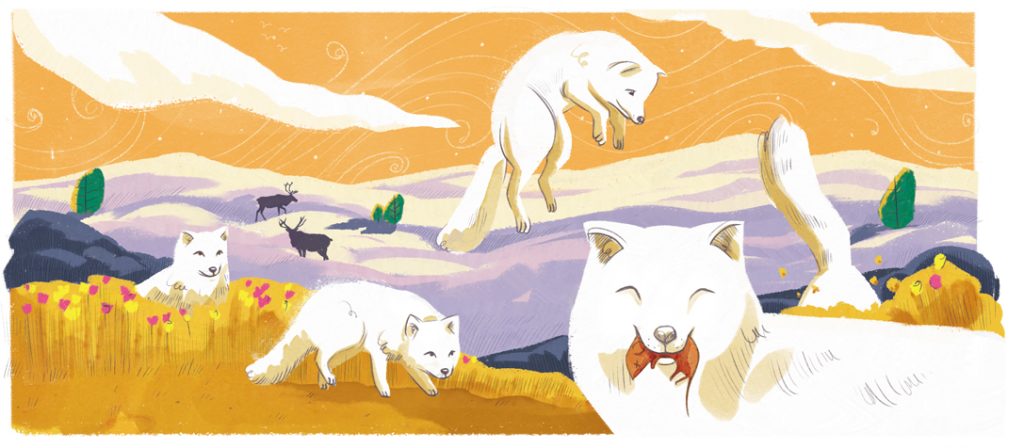The first streaks of dawn would usher in our “hunt” – to walk through grasslands to spot the Montagu’s and Pallid harriers – migratory birds of prey. By September, the summer home of the harriers, in Kazakhstan and Central Asia turns bitterly cold and gets covered with snow, leaving them with few options for finding food, such as voles, insects, and small birds. Thus, they begin an arduous migration, which will take them skimming over lofty mountains in Central Asia, over sandy and deserted dunes in Afghanistan, and into many parts of India. They arrive between September and November, to find food amidst the lush green grass and crops.
Each morning during the months that the harriers are in India, Ganesh and I walk the trails, trying to spot and count the harriers. This is like running through the attendance register at school: we want to know how many harriers have turned up, each day, and across the season. A reduction in their number can tell us if something may have changed in the grasslands, such as the availability of their food.
A gliding, elegant blue-grey harrier makes a beautiful sight and is more refreshing than our morning cups of coffee! Many harriers sport red-brown feathers, meaning they are young birds. Imagine a 4-month old bird flying over the mountains and deserts to meet you and me here in India!
Once here, the harriers fly low over the ground, barely a few feet above the grass, unlike eagles that scan for prey from high above. We watch them eagerly, as they perform various acrobatic flights to corner their prey, finally pouncing on a large grasshopper or small bird. Having caught a meal, the harrier then flies to a small open patch on the ground to prevent its prey from escaping, and dissects it carefully, consuming only the most nutritious parts. We also take a keen interest in their prey, noting down how many of each type are available in the grasslands, as this will tell us whether the harriers’ food has dwindled, changed, or increased. Remember, these harriers come from thousands of kilometers away in search of food, in these fast-disappearing grasslands in India. And the grasslands and savannahs are not only important for the harriers. They are also home to various wild grasses, wolves, foxes, and unique birds, and provide pasture to goats, sheep, and cattle.
An afternoon nap for the harriers in the shade suggests that we take one too since the grasslands are located in extremely hot and dry areas of the country: around the deserts of Rajasthan, in the grasslands of Gujarat, and on the Deccan plateau all the way into Southern Tamil Nadu. After lunch and a cup of tea, we head off to the grassland once again to a small patch called a harrier roost. A roost is an interesting place – a patch of tall grass, which the harriers hustle into each evening to make their bed. They trample the soft grass into a cup and form a cozy bed just like you and I wrap ourselves in blankets. This is a safe haven for them each night, to guard themselves against large owls, foxes, and jungle cats that might prey on them. Here, they spit out small pellets. These pellets contain undigested feathers, hair, bones, and insect body parts from their food, which are a precious resource for us. We collect them to observe under the microscope later, to find out what they have eaten. Pellets can tell us more about how these harriers survive in harsh weather, and how they change their diet as the grass starts to dry out and the grasshoppers become fewer in number!
From the gliding and feeding frenzy through the morning and afternoon, it has been a long day for the harriers. It is time to rest, and just like a crowd gathering in a cafe of an evening, the harriers can be seen flocking at their favourite mound or in a bare patch close to their roost. They perch silently, sometimes inviting others flying by with a shriek, sometimes fighting for a place, and preen their ruffled feathers before sleep. They also offer other harriers a clue to the site of their ‘camp,’ by flying in short circles over their roost. As the sun sets, they drop into the grass ever so quietly but remain alert enough to fly off on sensing danger. It’s a day’s story that recurs throughout the winter months, weaving the pattern of the seasons. As the green grass takes on golden brown hues with the onset of summer in March, the harriers start to turn back, to resume their migratory journey beyond the mountains and deserts.
Fun facts
There are 16 species of harriers belonging to the genus Circus distributed worldwide, out of which 6 species visit India each winter. These are the Montagu’s harrier (Circus pygargus), Pallid harrier (Circus macrourus), Eurasian Marsh harrier (Circus aeruginosus), Pied Harrier (Circus melanoleucos), Hen harrier (Circus cyaneus) and the Eastern Marsh harrier (Circus spilonotus).
Etymology – The name “harrier” may have come from an old English term “hergian” meaning to harass by hostile attacks. The scientific name “Circus” may have come from the Greek work “kirkos” meaning to fly around in circles.
Bright and cryptic colors – The males of most harriers are a bright grey in colour, while the females and young harriers sport a subtler mix of brown, white, and red-brown plumage.
Habitat – The Montagu’s, Pallid, and Hen harriers inhabit dry grasslands and savannahs in arid and semi-arid areas, while Marsh harriers inhabit wetlands and marshes. Harriers need grass – Harriers, unlike other large birds of prey, nest and roost on the ground in tall and dense grass.
Migration – Harriers migrate over a distance of 5000 km each winter, from Central Asia into India, or from parts of Europe into Africa! They may follow one route to reach their destination and another to fly back to their breeding grounds.
A spectacle – Harrier roosts in Gujarat (in the Blackbuck National Park, in Velavadhar) can contain an astounding 1200 birds by September-October each year! They can be seen flying around in circles in unison in the late evenings.
Swoop-snatch – Harriers are adept at snatching their prey in mid-air after they flush them with their swooping flight.
Voracious appetite – From a brief survey of harriers in Velavadhar (Gujarat), the flock of harriers in Velavadhar alone was estimated to consume between 2 and 2.5 million locusts during a single winter in India.
A varied menu – Harriers consume a wide variety of prey, including grasshoppers, small birds, small lizards (Sitana species), and small rodents.
Living together – Harriers form communal roosts that include more than one species of harrier. Roosting is preceded by spurts of flying around in circles before diving into the grass.
A web of life – Harriers share the grasslands with other unique and endemic fauna, such as the blackbuck, the wolf, the florican, and the critically endangered Indian bustard.
Ornaments – Scientists have used small numbered metal rings, placed on the legs of individual harriers, to track their movement patterns. You can learn more about some of the birds we have ringed here:
https://harrierwatch.com/wp/index.php/report-your-sightings/





